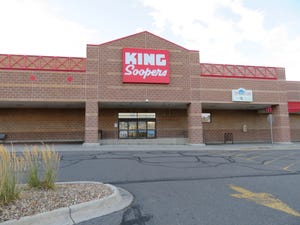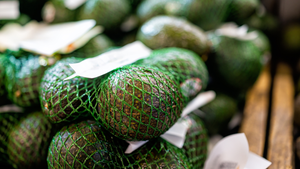NUMBER OF FLORAL AREAS IS EXPECTED TO EXPANDNUMBER OF FLORAL AREAS IS EXPECTED TO EXPAND
CHICAGO -- The number of floral departments in supermarkets is expected to grow almost 9% this year, according to a study released here last week at the annual convention and educational exposition of the Food Marketing Institute, Washington.The largest increase is expected to be in full-service floral departments, which should grow by more than 15%, according to the study. By contrast, self-service
May 9, 1994
TONY SPLEEN
CHICAGO -- The number of floral departments in supermarkets is expected to grow almost 9% this year, according to a study released here last week at the annual convention and educational exposition of the Food Marketing Institute, Washington.
The largest increase is expected to be in full-service floral departments, which should grow by more than 15%, according to the study. By contrast, self-service departments should grow by 5.4%, and limited-service departments by 4.2%.
The study of supermarket floral operations is part of the 1994 update of Food Marketing Industry Speaks, FMI's annual industrywide sales and operations survey. This is the first year floral operations were included in the study.
Higher margins and a larger percentage of store sales appear to be driving the projected growth in full-service departments. Floral products in companies that operate full-service departments account for between 0.85% and 1.6% of total store sales, the study found.
In comparison, floral products in stores that operate self-service departments account for between 0.25% and 1.35% of store sales, while limited-service came in between 0.48% and 1.0%.
The average gross margin on floral sales is also higher for full-service departments: 39% to 50%, compared with 33% to 42% for self-service, and 29% to 40% for limited-service.
Not only does the data project
future developments, it also indicates a significant change over the last five years. During a period of intense belt-tightening, when many supermarkets were trimming service departments in order to cut costs, the data suggests that the exact opposite was happening in floral departments.
A 1989 study by FMI and the Produce Marketing Association, Newark, Del., for example, found at that time most floral departments (43%) were limited-service, while full-service departments were in the minority (12%).
The new FMI study shows limited-service departments have fallen slightly in popularity (35%), while full-service departments -- which bring with them higher labor and operating costs -- have grown significantly, representing 38% of departments.
The 1989 survey did not ask retailers specifically how floral performed as a percentage of store sales. However, it did compare the sales of the different department formats reporting. Of all the stores surveyed at that time, limited-service departments generated 52% of total floral sales, while full-service departments generated only 8%.
The new study reports average weekly sales for the different department formats. Full-service departments fared best, garnering $1,575 to $4,500 in weekly sales, compared with $1,000 to $3,000 for limited-service departments, and $800 to $900 for self-service.
As can be expected, labor costs vary with the level of service. Labor costs as a percentage of department sales average 15% to 24% for full-service departments, 11% to 16% for limited-service, and 3.5% to 11% for self-service. The survey found that the average hourly wage excluding benefits for floral sales clerks was $7.50.
The survey queried supermarkets on the effect of their merchandising and promotional efforts on sales.
Survey respondents reported that their most successful promotions are those tied in with four major holidays: Mother's Day, Easter, Valentine's Day and Christmas.
Special floral promotions generate higher incremental sales in companies that operate more than five departments, most likely because these companies have stronger central buying power to support promotions heavily, the report suggests.
Companies with more than five departments cite weekly sales increases from holiday promotions ranging from 50% to 300%, compared to those with fewer departments, which report increases of 28% to 123%. For nonholiday periods, sales increases are lower: 16% to 60% for companies with more than five departments; 10% to 20% for companies with fewer than five departments.
Fresh flowers account for the largest percentage of sales, with 41% of respondents reporting that fresh flowers represent over half of department sales. An additional 34% of companies report fresh flowers account for between 26% to 50% of total department sales.
Flowering and foliage plants also make a significant contribution, according to the report. Three in 10 respondents said flowering plants account for 26% to 50% of sales, while 14% said foliage plants make up 26% to 50% of department sales.
In addition to sales and financial data, the study gathered information from retailers on department size, use of universal product codes, shrink and distribution.
About the Author
You May Also Like




